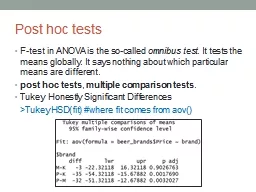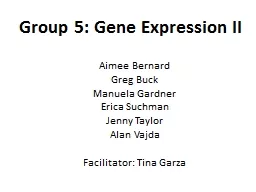PPT-Post hoc tests
Author : alexa-scheidler | Published Date : 2017-05-23
Ftest in ANOVA is the socalled omnibus test It tests the means globally It says nothing about which particular means are different post hoc tests multiple comparison
Presentation Embed Code
Download Presentation
Download Presentation The PPT/PDF document "Post hoc tests" is the property of its rightful owner. Permission is granted to download and print the materials on this website for personal, non-commercial use only, and to display it on your personal computer provided you do not modify the materials and that you retain all copyright notices contained in the materials. By downloading content from our website, you accept the terms of this agreement.
Post hoc tests: Transcript
Download Rules Of Document
"Post hoc tests"The content belongs to its owner. You may download and print it for personal use, without modification, and keep all copyright notices. By downloading, you agree to these terms.
Related Documents














